Speaker
Description
BACKGROUND
Fungal spores constitute a significant fraction of visible atmospheric bioaerosols. While they play an essential role in decomposing organic matter within ecosystems, they can also negatively impact on agricultural crops and human health. Despite their immense diversity and abundance, fungal spores remain relatively understudied. Although some research has explored the full spectrum of airborne fungal spores, only a few studies have compared their concentrations in urban and rural environment. Up-to-date knowledge suggests that rural areas generally have higher fungal spore concentrations due to larger source areas and greater biomass, such as agricultural fields and organic waste [1, 2]. To address the limited research in this field, our study aimed to evaluate the diversity and abundance of fungal spores in two locations with varying levels of urbanisation.
METHODS
Airborne fungal spore samples were collected from February to November 2022 at two sites in Slovakia located 38 km apart: the rural village of Kaplna (KP) and the urban area of Bratislava (BA). The KP site is predominantly surrounded by farmland, while the BA site features diverse urban environment, including buildings and green spaces. Both locations share a temperate continental climate with warm summers and cold winters. Spore collection was conducted using two volumetric Hirst-type samplers, each operating at a suction rate of 10 L/min. Due to logistical constraints, the samplers were placed at different heights: 18 m above ground level in BA and 3 m in KP. Airborne particles were captured on adhesive tape, which was replaced weekly and divided into daily samples. These samples were analysed under a light microscope to identify fungal spore diversity and abundance. Each slide was examined along 12 vertical transects, and daily spore concentrations were expressed as spores per cubic meter of air (spores/m³) [3]. The characteristics of the main spore season (MSS) were determined for taxa with an annual spore integral (ASIn) exceeding 2,000 spores*day/m³ at both sites, covering 19 taxa. The MSS was defined using the 90% method. To investigate relationships between the 19 most abundant taxa and meteorological variables, a non-parametric Spearman’s correlation analysis was performed. Statistical analyses were conducted using Statistica 12 and R software.
RESULTS
Microscopic analysis identified 67 fungal spore groups (FSG), with 64 detected in BA and 59 in KP. BA had eight unique groups, while KP had three, but these unique groups contributed less than 0,01% to total concentrations. The two sites shared 83.5% of the identified FSG.Most FSG belonged to the taxonomic groups of Ascomycota and Basidiomycota, except for Myxomycetes (Protozoa) and Peronospora (Chromista). The most frequently observed FSG, detected on more than 90% of sampling days at both sites, were Alternaria, Arthrinium, Cladosporium, Coprinus type, Epicoccum, and Leptosphaeria type.
Total spore abundance differed significantly, with ASIn of 2,368,367 sporesday/m³ in BA and 1,113,864 sporesday/m³ in KP. FSG concentrations were lowest in spring (March) and highest in summer, peaking in July in BA and June in KP. Summer months accounted for over 50% of the ASIn at both sites. The dominant FSGs contributing more than 90% of the ASIn included Cladosporium, Coprinus type, Agaricus type, Leptosphaeria type, Oidium type, Alternaria, Myxomycetes, and Ganoderma. Cladosporium was the most dominant, making up 69,6% of ASIn in BA and 65,2% in KP.
The MSS typically started earlier in KP but ended at the same time in mid-November for both sites. The MSS duration was generally longer in KP, with 11 FSGs showing an extended MSS of more than five days. The MSS duration across groups ranged from 46 to 236 days. Overal, spore concentrations were higher in BA, except for Alternaria, Aspergillus/Penicillium, Arthrinium, Fusarium, and Torula, which were more abundant in KP.
Spearman’s correlation analysis identified relative humidity, temperature, and sunshine as key meteorological factors influencing spore concentrations. Relative humidity exhibited both positive and negative effects, with positive correlations being more common. Temperature and sunshine generally had a positive impact, although the effect of sunshine was weaker. Precipitation positively influenced four FSGs: Leptosphaeria type and Pleospora at both sites and Ascochyta and Diatrypaceae in BA. Wind speed, however, had minimal influence on spore concentrations.
CONCLUSION
Our findings showed significantly higher fungal spore concentrations in urban areas compared to rural ones, challenging the assumption that rural environments with more plant biomass naturally have higher spore levels. This may result from fungicide use in rural areas, while urban conditions may enhance spore aerosolization and dispersion. Despite concentration differences, fungal spore diversity was similar at both sites, including many economically and medically significant taxa. The MSS characteristics of these taxa offer valuable insights for allergology and agriculture. Our results also highlight significant spatial variations in fungal spore concentrations, even between geographically close areas. This underscores the need to expand monitoring networks and carefully select monitoring sites for more detailed data. Additionally, ongoing multi-year monitoring is essential to refine predictive models and enhance our understanding of fungal spore dynamics in various environments.
REFERENCE LIST
[1] I. Kasprzyk and M. Worek, ‘Airborne fungal spores in urban and rural environments in Poland’, Aerobiologia, vol. 22, no. 3, pp. 169–176, Sep. 2006
[2] M. Oliveira et al., ‘Seasonal and intradiurnal variation of allergenic fungal spores in urban and rural areas of the North of Portugal’, Aerobiologia, vol. 25, no. 2, pp. 85–98, Jun. 2009
[3] C. Galán et al., ‘Airborne fungal spore monitoring: between analyst proficiency testing’, Aerobiologia, vol. 37, pp. 1–11, Jun. 2021

